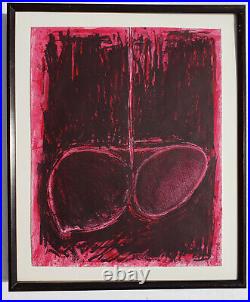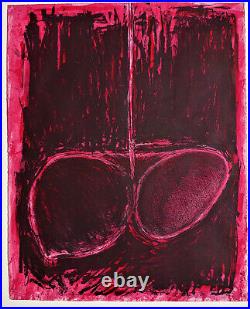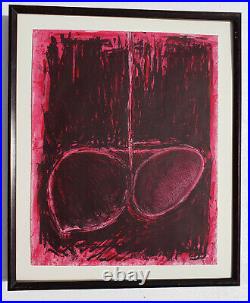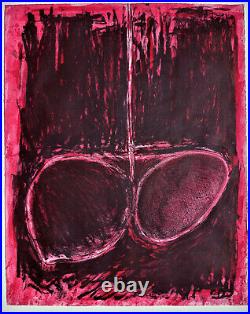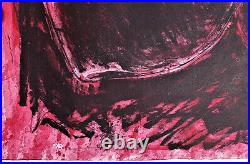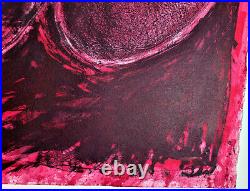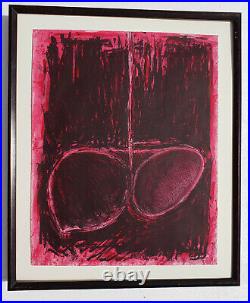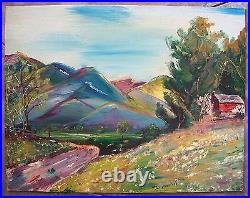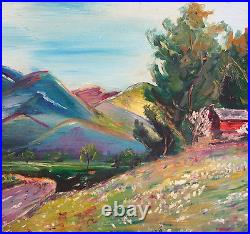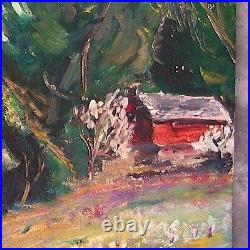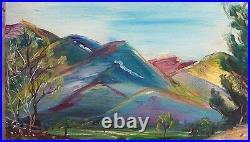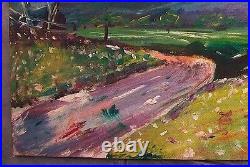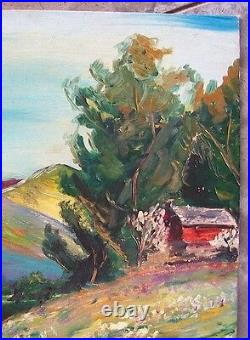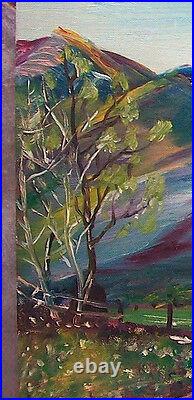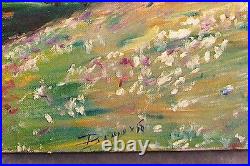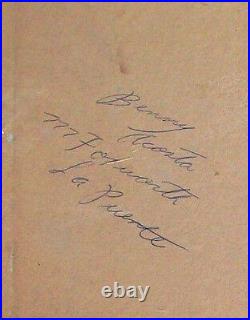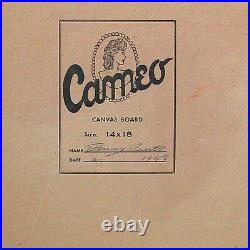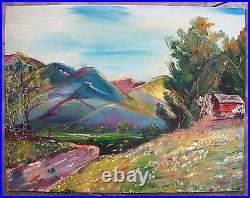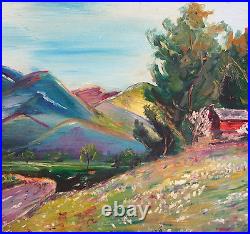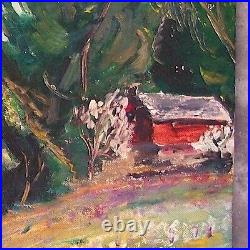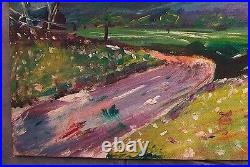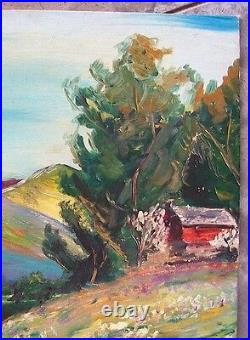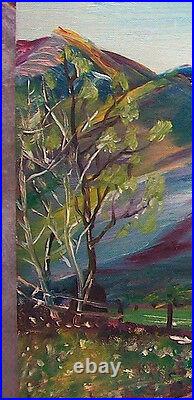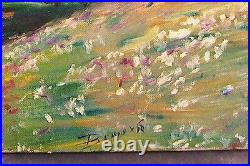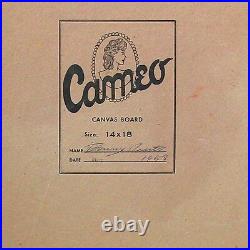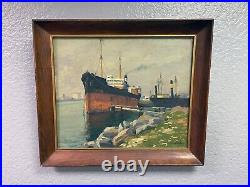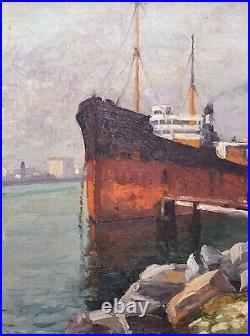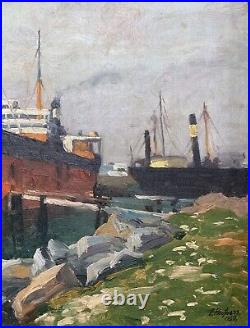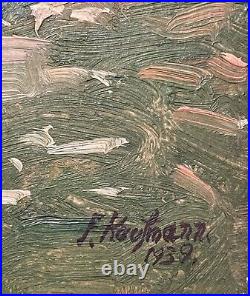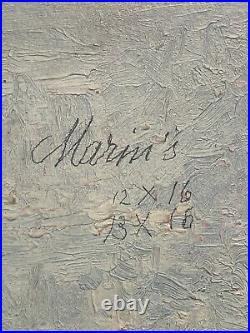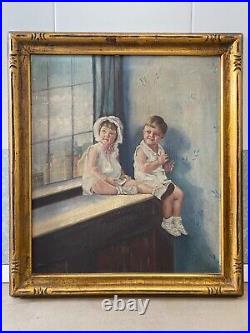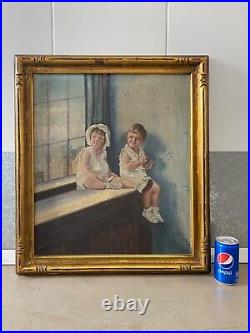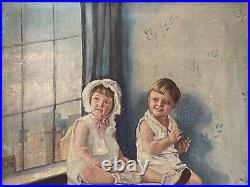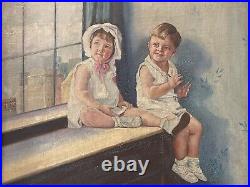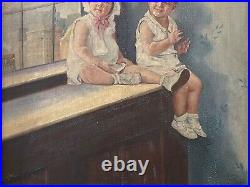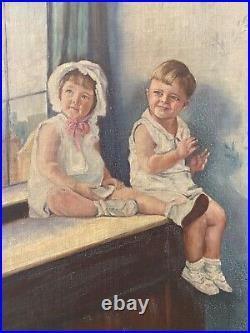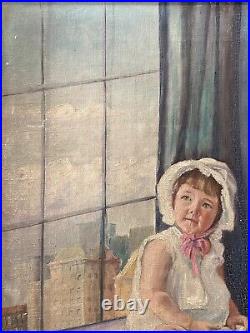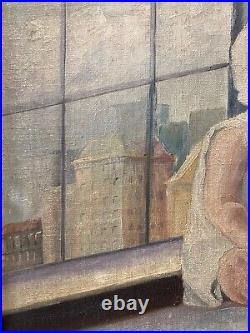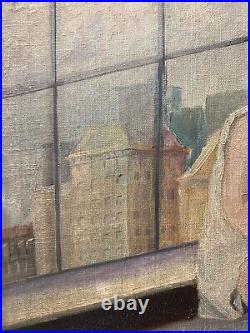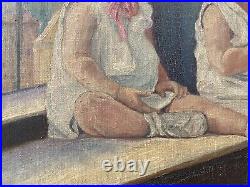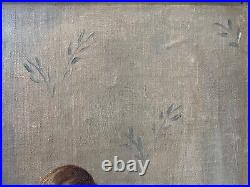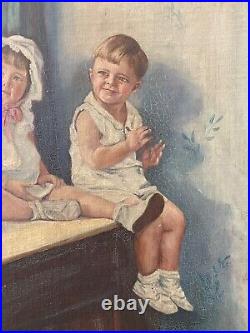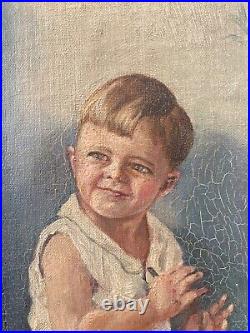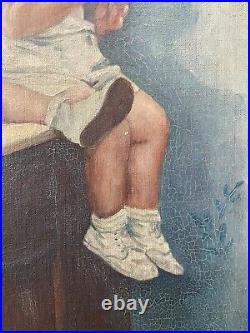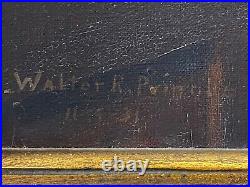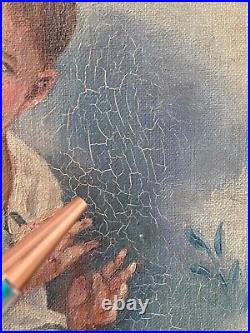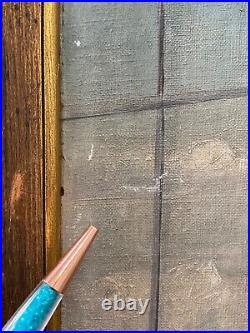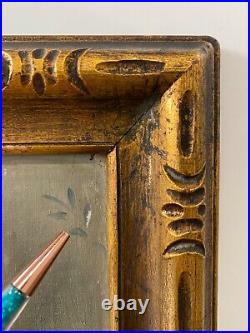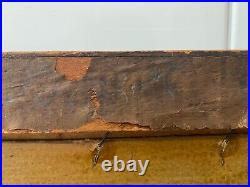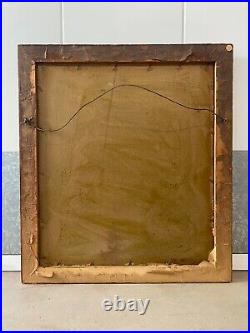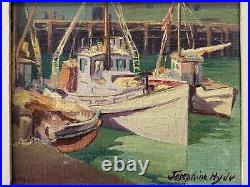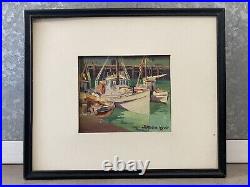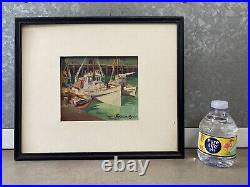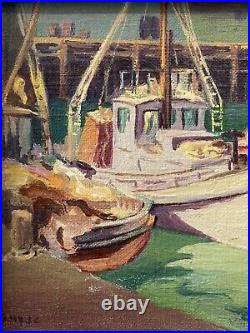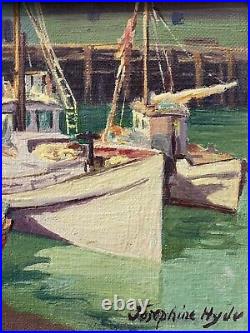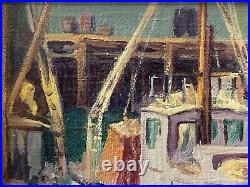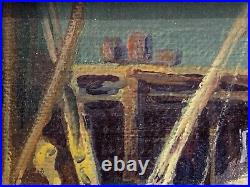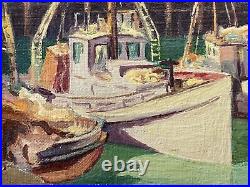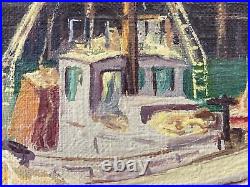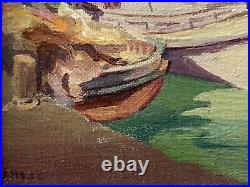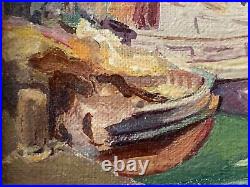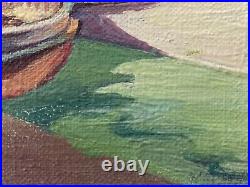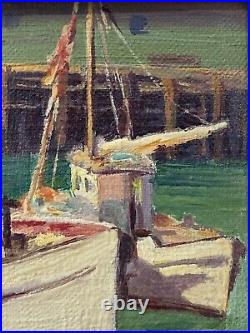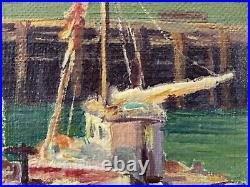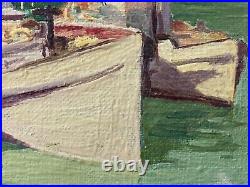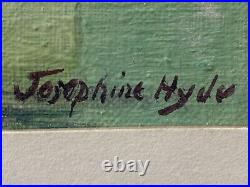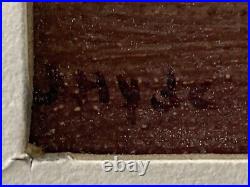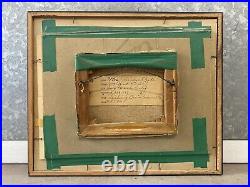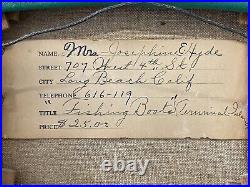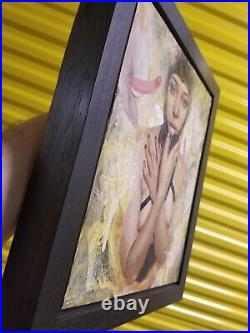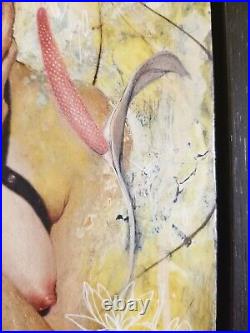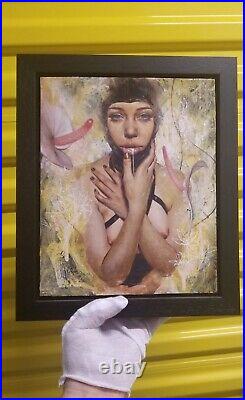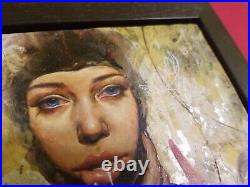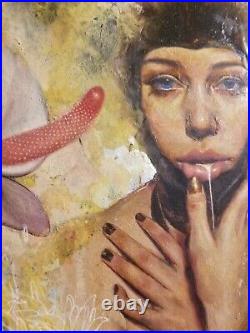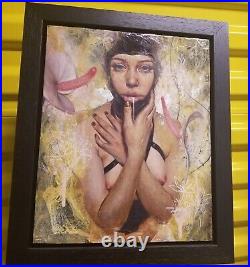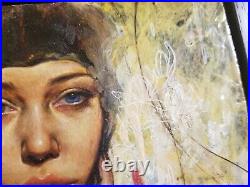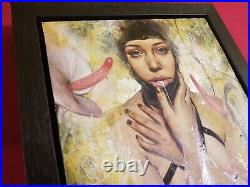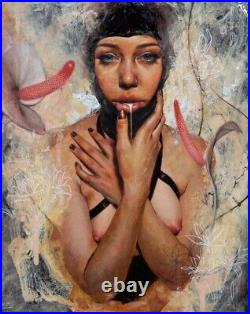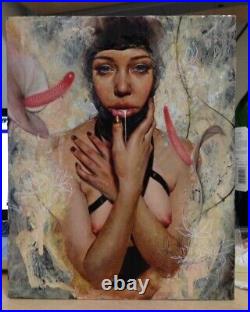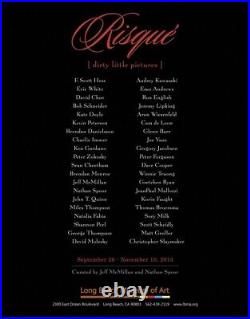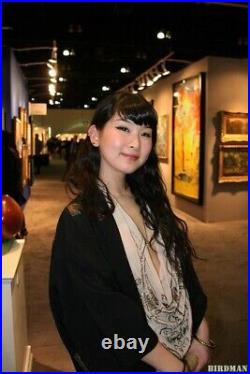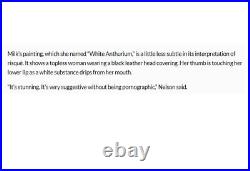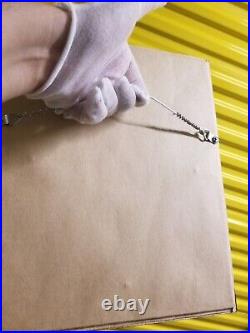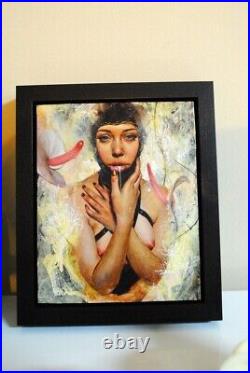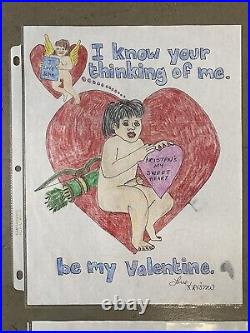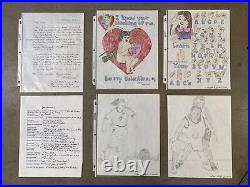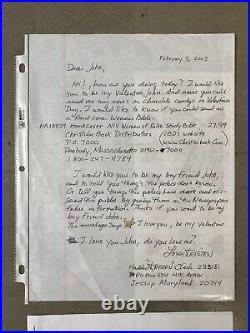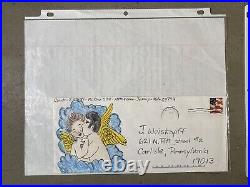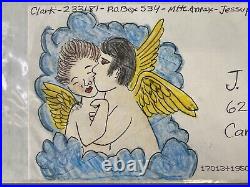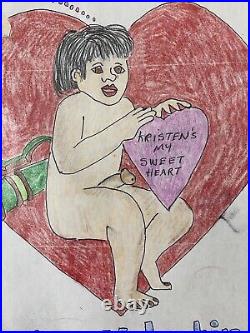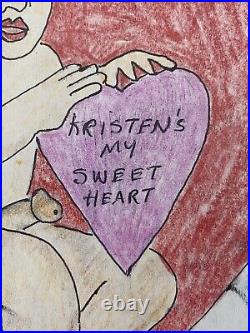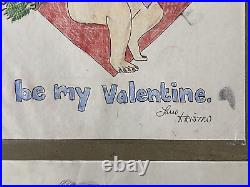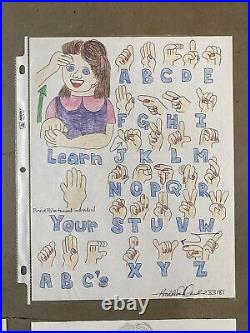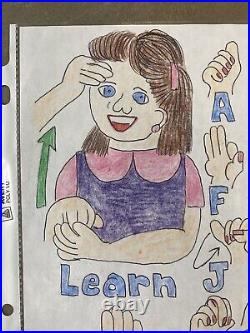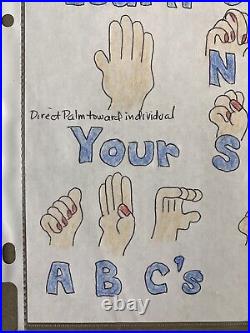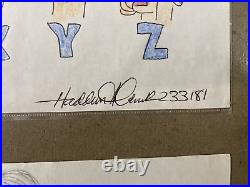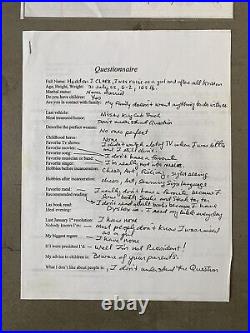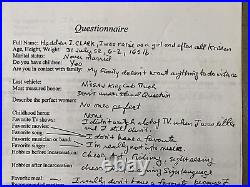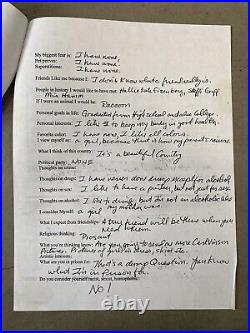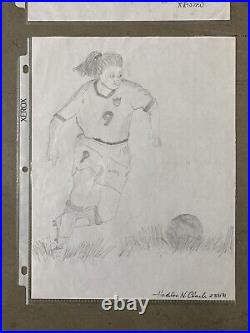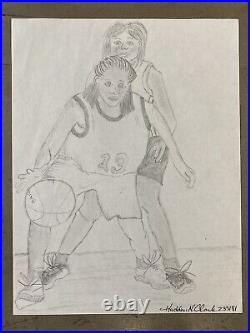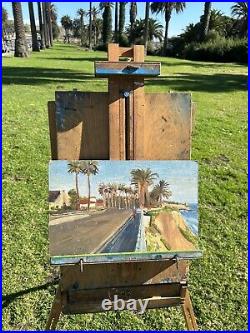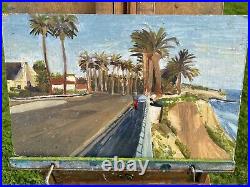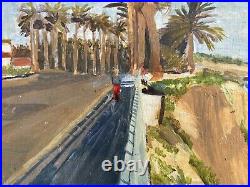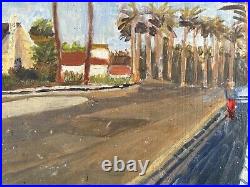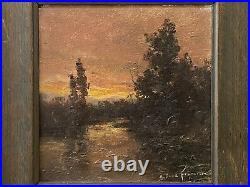
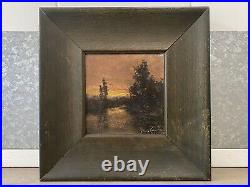
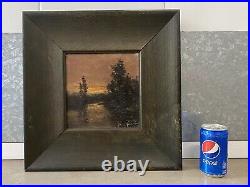
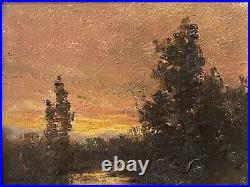
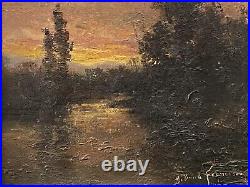

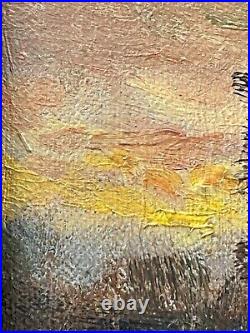
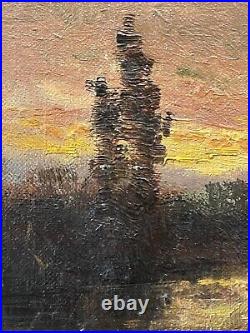

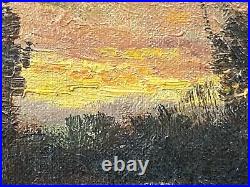
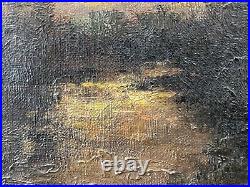
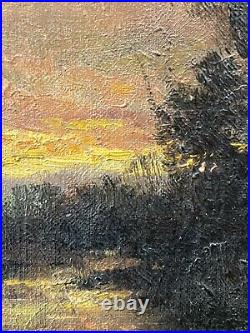
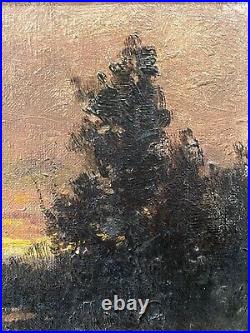
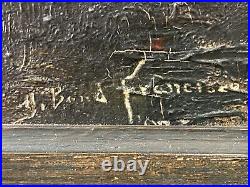
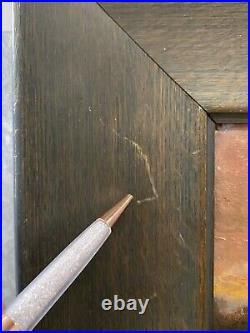
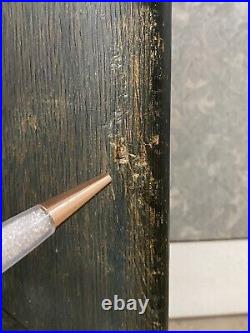
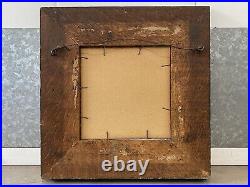
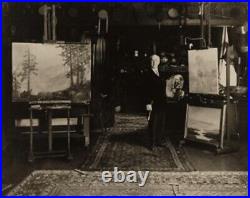

This is an enchanting and wonderful Antique Early California Tonalist Impressionist Landscape Oil Painting on Artist Board, by the esteemed early California landscape painter, John Bond Francisco 1863 – 1931. The piece depicts a tranquil sunset scene at dusk, with the golden orange hues of the setting sun portrayed in striking contrast with the shadowy silhouettes of the trees and forest below. In the foreground, a placid body of water, possibly a small pond is visible. Bond Francisco in the lower right corner. This small gem is approximately 14 1/4 inches wide x 14 1/2 inches tall including frame. Actual artwork is approximately 7 1/4 x 7 1/2 inches. This painting likely dates to the late 1910’s – 1920’s. Good condition for age and storage, with mild – moderate scuffing, scratches and edge wear to the original antique period wooden frame please see photos. Acquired from an old collection in Los Angeles County, California. If you like what you see, I encourage you to make an Offer. Please check out my other listings for more wonderful and unique artworks! 1863 – Cincinnati, Ohio. 1931 – Los Angeles, California. Landscape, figure and portrait painting. John Bond Francisco (1863 – 1931) was active/lived in California, Ohio. John Francisco is known for Landscape, figure and portrait painting. John Bond Francisco was born in Cincinnati, OH on Dec. From an early age Francisco was drawn to both music and art. He studied the violin with Hermann Eckhardt and painting at the Cincinnati Art Academy for several years. He arrived in Los Angeles in 1887 and was so taken with the beauty of the place, he opted to make it his home. He soon continued his studies in Berlin, Munich, and in Paris at Académies Julian and Colarossi under Courtois, Bouguereau, and Robert-Fleury. While in Europe he studied the violin in the morning hours and painting in the afternoon. Upon returning to Los Angeles in 1892, he married and built a home at 1401 Albany Street where he lived for the rest of his life. Combining an art and music career, he helped form the Los Angeles Symphony Orchestra in 1897 and served as their first concert master. While teaching music and art at his studio, he made painting excursions into the surrounding countryside, often with his pupil Elmer Wachtel. He combined his Munich technique with that of the Barbizon’s influence to produce paintings of California deserts and mountains that held dramatic light and shade contrasts. Later his palette brightened, and he leaned more toward Impressionism. Francisco’s studio in the Blanchard Bldg and his home were a mecca for both painters and musicians until his death on Jan. Member: American Artists Club (Munich); Calif. Art Club; Laguna Beach AA; Painters & Sculptors of LA; Athletic Club (LA); LA AA. In: UCLA; LACMA; Orange County (CA) Museum. Who’s Who in the Pacific Southwest. Who’s Who in California. 1929; Los Angeles Times, 8-3-1930. Artists of the American West. Dictionary of American Painters, Sculptors & Engravers. Born in Cincinnati, Ohio, he became a California painter of impressionist mountain and desert landscapes with dramatic lighting effects. He was one of the earliest landscape painters to live in Los Angeles. He studied art and music at Ohio State University and also went to Europe, painting with Fechner in Berlin and Nauen in Munich. In Paris, he studied at the Julian and Colarossi Academies, and his teachers were William Adolphe Bouguereau, Tony Robert-Fleury, and Gustave Courtois. He also painted in Switzerland, Germany, and France, and took violin lessons in Berlin and Paris. In 1887, he settled in Los Angeles where he married and spent the remainder of his life, combining careers of fine art painting and music. His home and studio at 1401 Albany Street became a popular gathering place for artists and musicians. In 1897, he helped form the Los Angeles Symphony Orchestra and was its first concert master. He painted mountain and tree landscapes and glowing desert scenes, often painting with landscapist Elmer Wachtel. He was first in northern Arizona in 1906 as a guest of the Santa Fe Railroad, and one of his Grand Canyon views was used for a travel ad. Biography from William A. Bond Francisco was born in Cincinnati, Ohio, in 1863, where he studied music and fine art. Further studies in Berlin, Munich, and Paris followed his move to Los Angeles in the 1880’s. Bond would pursue careers in art and music. He was instrumental in founding the Los Angeles Symphony Orchestra, serving as its first conductor. Painting in a Barbizon palette, Francisco also taught from his studio, and on painting excursions. Among his students was Elmer Wachtel. John Bond Francisco died in Los Angeles in 1931. John Bond Francisco (December 14, 1863 – January 8, 1931) was an American painter and violinist. He exhibited his paintings in Los Angeles , California. As early as 1892 and he co-founded the Los Angeles Symphony Orchestra in 1897. Francisco was born on December 14, 1863, in Cincinnati, Ohio. His father, Andrew Wiggins Francisco, was the editor of the Ohio State Journal. Francisco graduated from Ohio State University. And he also studied in Paris, Munich and Berlin. Francisco began his career as a music teacher in Los Angeles, California in 1887. He exhibited his paintings in Los Angeles as early as 1892. Francisco was a member of the Southern California Art Club and the Laguna Beach Art Club, and he founded the Society of Fine Arts of Southern California in 1895. Two years later, in 1897, he co-founded the Los Angeles Symphony Orchestra with Harley Hamilton. And he was its first concert master. Francisco resided at 1401 Albany Street in Los Angeles with his wife, née Nanette Louise Gottschalk. They had a son, Jack Bond Francisco Jr. And a daughter, Mrs Herbert McGaffey. Francisco died at home on January 8, 1931, at age 68, and he was buried in the Rosedale Cemetery. According to Peter J. Holliday, Francisco was responsible for conferring respectability on the artist’s calling in Los Angeles. California’s State Librarian, Francisco showed “that life could be lived for art in Los Angeles and Southern California with panache and financial success, ” and he dazzled contemporary Los Angelenos and filled them with pride that Culture was at last coming to the Southland. In 1992, his grandson donated his papers to the Smithsonian Institution. S Archives of American Art. His work can be seen at the Smithsonian American Art Museum. Born in Cincinnati, Ohio, John Bond Francisco was a serious student of the violin and painting, both of which he studied in Munich. He also studied painting at the Académie Julian under William Bouguereau, Gustave Courtois, and Robert-Fleury, and at the Académie Colarossi under Thomas Couture and Jean-André Rixens. The disciplines he developed during this important period of his young career helped his become one of California’s most important artists. After completing his European studies, Francisco traveled to California in 1887 and settled in Los Angeles. He became a prominent cultural figure there; he performed as a violinist, painted, taught, and entertained in his lavish home and studio, which he built at 1401 Albany Street. Francisco was a founding member of the Los Angeles Symphony Orchestra in 1897 and served as its first concertmaster. Francisco’s first exhibition in Los Angeles in 1892 was almost exclusively figural studies reminiscent of the work he produced during his time at the Académie Julian. In 1899 he opened his own art school, and while he continued painting figural subjects, he also began to explore the California landscape. His early landscapes were influenced by the French Barbizon school, but he soon took up a lighter impressionist palette. In 1906, the Santa Fe Railroad recognized his talents as a landscape painter and commissioned Francisco to paint a series of scenes of the Grand Canyon to be used to promote the region and the railroad. Bond Francisco was a member of many California art organizations and he served on the Chicago World’s Fair jury in 1893. His home became a social, artistic, and theatrical destination for many in the Los Angeles area. Many notable musicians, artists, and actors were entertained in the spacious and inviting Francisco home and studio. Celebrities like Sarah Bernhardt, Victor Herbert, and Lillian Russell were frequent guests at the grand parties hosted by the artist and his wife. John Bond Francisco Biography. John Bond Francisco was an American painter associated with the early California school of Impressionism. Born in Cincinnati, Ohio in 1863, he became recognized as an accomplished California painter, his Impressionist mountain and desert landscapes featured the dramatic lighting effects influenced by his early training in the Barbizon School in France. As one of the earliest landscape painters to live in Los Angeles, his paintings were highly sought after by collectors. Francisco traveled and painted California’s and the southwest’s varied landscapes, often he was seen painting with fellow landscapist Elmer Wachtel. He passed away in Los Angeles in 1931. Bond Francisco (1863 – 1931) built a home in Los Angeles for his bride, the singer Nanette Louise. Their house became the scene of many elegant evenings with music and dancing, and Francisco once said that “the best things in life are the friends it brings to you” Millier, J. Bond Francisco Honored as Last Paintings Shown. He was as much a musician as an artist, helping establish the Los Angeles Symphony Orchestra in 1897 and serving as its first concert master. Francisco founded a private academy of art and focused initially on portraits and figure studies, but he is better known for his later images of sun-washed California landscapes.



